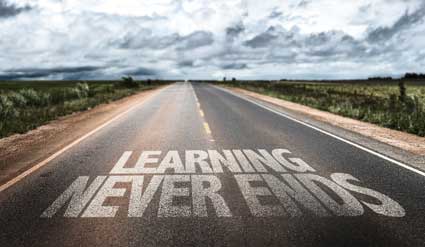Improvisation Tricks to Use in Conversation
What is improvisation
Improvisation involves multiple skills in order to successfully perform and utilize improvisation in its fullest potential. Improvisation is defined as having no plan or scripted words to get through a conversation, rather you are thinking on your feet and determining what to say next based on the present person and conversation. Improvisation involves multiple skills that overlap with other domains of conversation and communication.
What quality and skills make up improvisation
The first and most important quality that improves the use and effectiveness of improvisation is confidence. It is important to distinguish a quality of confidence from exuding a feeling of "know it all" status. The difference between a confident person and some perceived as a "know it all" comes down to genuineness and authenticity. Everything you say should be genuine and in line with who you are. This feeds into confidence and points to the importance of gaining self awareness. A key way to increase your confidence is to increase your self awareness. How do other's perceive you to be? Is this benefitting your communication styles or hindering your goals? If it is hindering, how can you alter your own presentation of yourself or approaches to conversations. Some tips to improve self awareness are to ask your closest friends how you come off or what your first impression was with them. Additionally, a good practice is to be very cognizant of yourself in a social environment in which you are communicating, whether personal or professional. Pay attention to the thoughts in your mind as you are communicating with another person. What is your attitude? What automatic thoughts come up depending on the type of person you are talking with, or the context in which you are talking? Asking yourself these questions will gain your self awareness and help you to learn who you are in these situations. Also, at the end of each day, journaling is an effective practice for increasing your self awareness and understanding who you are. One specific area to develop confidence through gaining self awareness is to know your strengths, and when in conversation rely on those strengths.
Another important skill to improvisation is thinking on your feet. Improvisation is spontaneous, you cannot plan for it. So you must be able to take in immediate information available and use it to keep the conversation going. What is the other person talking about? Thinking on your feet will involve the use of your active listening skills. You should not be thinking about what you will say next, remember that is planning, you are present in the moment and flowing with the conversation. So focus on active listening, pull out key words the other person is using and use those words to jump start what you will say next. As you move through the conversation, keep a mental list of these key words as well as the details that seem important to the person you are communicating with. The key words and important details will create your "go-to" list. The "go-to" list is a tool to help your brain think on its feet as you move through the conversation.
The best way to develop your "go-to" list is to ask questions, talk about yourself less and focus on the other person. Remember, people love talking about themselves, so show genuine interest in learning about their professional projects or tasks, or personally about their lives. A great strategy for improvising is to ask a question. Pull up a detail from earlier in the conversation and ask a question that stems off of that detail. This is great improvising when you feel stuck. Also, improvising is a skill that is utilized to keep the flow of the conversation going, especially when you or the other person are feeling awkward or starting to be stuck for what to say. So you never want to ask closed questions that require a simple yes or no. Instead use open ended questions, this gets the other person talking again. If you combine an important detail from the "go-to" list with an open ended question, you have a powerful combination to improvising.
There are many other tips that are useful when you need to improvise and are feeling at a loss. First is to use the "yes, and…" or "no, but let me tell you…" phrases. The next tip is to ask the other person, "tell me more about…" and refer back to something you found interesting earlier on in the conversation. Finally, you can always fall back on your storytelling skills. Telling a story can be a great improvisation that keeps the flow of the conversation alive and builds off of the other person's points.
As you move through a conversation, another important sub skill of improvisation is to recognize opportunities. This means that you quickly notice when you have a chance to improve your impression or to connect with the person more deeply. Remember, this conversation has a purpose, whether personally or professionally. Therefore, you will be looking for opportunities to be remembered by that person; to connect, to network, and to build a relationship. In doing this, improvising involves you attuning to the important details and key words, and knowing when to jump into a certain detail. With recognizing opportunities, improvising also involves the ability to be flexible. Flexibility means you are not tied down to one topic, if the other person seems to be passionately interested in a tangent that they get into, go with that flow. This is a part of improvising. The trick is to then tie what the person said back to your own goals of the conversation. So this strategy involves improvising in a way that you are able to take the information the other person is giving you and use it with what your own purpose of the conversation is.
Some conversations will be very brief and require full improvising because you will not have time to gather important information. In such conversations, improvising will be your fall back strategy in a brief conversation. One sub skill in a brief conversation is to quickly notice something about the other person and try to relate to them. This improvisation will help you establish a brief, but meaningful, connection, so that hopefully the other person remembers you later. Another strategy for improvising in a brief conversation is to turn what would be a brief conversation into a longer conversation. This is done by using the "yes and…" strategy. If someone asks you a seemingly simple questions, and you reply "yes," you are killing the conversation. However, if you reply "yes, and did you also know x, y, z" or "yes, and you mentioned x earlier…" The goal is to build off the conversation. Improvising is having no foundation, but rather building that foundation as you move through the conversation.
Another component of improvisation involves taking risks. Improvising can increase anxiety because you do not have a plan, and when there is no plan we can feel unsure how to deal with unpredictable situations. When in doubt, fall back on what you have in common with the other person. Even if this means talking about the setting. No matter what you will always have the setting in common with the other person, so a great way to improvise when you are not sure what to say, is to talk about something around you. Point out a painting you see, talk about the weather, or discuss a recent event that happened around your workplace. Any of these can help to trigger the other person and makes for great improvising.
Improving your ability to improvise can also enhance your leadership and negotiation skills. In this sense, improvising means you are able to build off the other person and also that you are able to let some things go. Letting some things go means you need to avoid any judgments or use of critical thoughts. Such thoughts will hold your mind back in the conversation and could kill any possibility of a productive or purposeful conversation. In the workplace, it can feel good to be right about certain ideas of decisions. However, improvising is a vital skill because it is geared for compromise. As another person is talking, you may not agree fully; however, the trick to improvising is to pull the pieces of information you can work with or live with and build off of that information to keep the conversation going.
Improvisation can also involve some risk taking. There may be a point in the conversation you throw out a thought or idea based off the other person's recent points that could pose a risk to the conversation. A risk in this sense is defined as the other person not responding as you would like to your improvised point, or the other person may glaze over what you say and keep talking about his or her own point. Taking risks also involves using your creativity, as you are most likely adding in ideas or thoughts to the conversation that are out of the norm for the topic of discussion. If you are in a professional conversation you may be too nervous to take risks, but taking risks through improvising can really make you stand out against other people.
One area of research that has looked at the use of improvisation in the business world has to do with practicing brainstorming skills through use of improvisation. Brainstorming is a vital component to many businesses within a variety of industries. It is also a useful skill each employee can work on and use to contribute to the greater success of the organization. Some practices used to foster improvisation skills as a way to enhance brainstorming involves exercises that work to make people produce information or an idea without getting a chance to think it over. For example, one exercise involves the use of a "metaphor ball." In this exercise, employees stand in a circle, the person with the ball starts a metaphor, such as "Dancing is like…" and throws the ball and the person who catches it must complete the metaphor as soon as they catch the ball (Gerber, 2009).
Another interesting concept within the realm of brainstorming with improvisation is that the best improvisors are actually providing information that is obvious and just makes sense. They are able to read their environment, take in what others are saying, and recognize opportunities. You need to alter your mentality when using improvisation to realize that there are no wrong answers or statements, rather only opportunities. Anything the other person says is an opportunity for you to build off of that idea and propel the conversation forward with the goal of coming up with a great plan or idea. Improvisation also helps you connect with other people because you are able to throw any judgments or critical thoughts out the window. You are fully committed to what the other person is saying and offering to build on that with your own feeling.
Practicing improvisation seems contradictory. In many ways it is difficult to really practice true improvisation without just doing it in real life. This is the best way to tailor your skills and also you ability to trust yourself to come up with things to say next (without consciously thinking about it). However, a few of the tips can be practiced in exercises as discussed above. These help to train yourself to think on your feet and also to throw out ideas with concern for being criticized. The more you do improvisation skills in a conversation the better you will be.



























